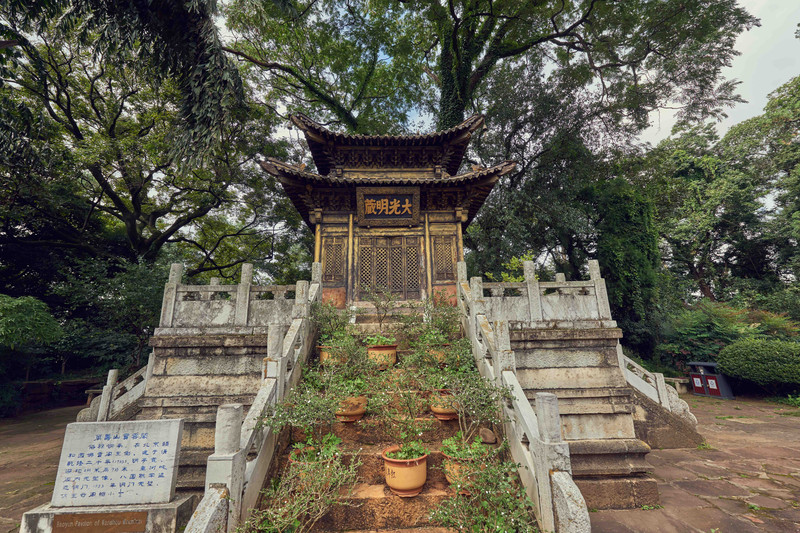The supreme national treasure left behind by the ancients, the "Golden Hall" is melted and cast with copper coins, with top-notch craftsmanship such as works of art

In thousands of years of technological history and cultural development, works with extremely high craftsmanship have appeared, and top crafts representing various eras can still be seen in museums.
"Copper" is one of the earliest metals in my country. It has a history of thousands of years. A large number of bronze products have appeared in some ancient sites.
Crafts made of copper are also one of the earliest works of art in history, and are widely used in the "Shang and Zhou Dynasties" to make musical instruments and some daily necessities.
During feudal society, copper represented money, and ordinary people generally could not afford copper objects.
Nowadays,"palaces" made of pure copper left over from history are preserved throughout our country. They are resplendent and are called the "Golden Hall" by the world.
Almost all of today's "golden halls" were cast during the Ming and Qing Dynasties, when the level of "copper casting craftsmanship" was at its peak in history.
Dozens of tons or even hundreds of tons of pure copper were built into the "Golden Hall" in one go, but most of them were buildings used by Taoism and enshrined the "True Martial God Statue".
Over hundreds of years of history, these "golden halls" have been damaged to varying degrees, but their superb casting craftsmanship, such as works of art, has been passed down to this day to become China's supreme national treasure!

The "Golden Hall of Wudang Mountain" is the most famous Golden Hall in Chinese history. It is located on Tianzhu Peak of Wudang Mountain. It was built in the Yuan Dynasty and renovated during the Ming Dynasty.
This "Golden Hall" has a very high historical status and has a very deep connection with Zhu Di, the founder of the Ming Dynasty, who ordered the construction of this "Golden Hall" on Tianzhu Peak.
It has a history of more than 600 years and is one of the oldest Golden Districts in China.
Inside the Golden Hall is a "True Martial God Statue". It is said that the appearance of this statue was modeled after Zhu Di, the Emperor Chengzu of the Ming Dynasty at that time.

Kunming's "Golden Hall" is the most completely preserved ancient Golden Hall and the largest Golden Hall. It weighs 250 tons and is located on Mingfeng Mountain.
It was built during the late Ming Dynasty, but due to various reasons, the Golden Hall built in the late Ming Dynasty was moved to Tianzhu Peak on Jizu Mountain in Dali and was destroyed in the last century.
The "Kunming Golden Hall" we see today was built by King Wu Sangui of Pingxi and has a history of more than 300 years.
This Golden Hall is built in imitation of the Golden Hall of Wudang Mountain, and it also houses the "True Martial God Statue".

Xiantong Temple in Shanxi is an ancient temple with a long history that has a history of more than a thousand years.
There is a "copper hall" in the temple, which was made during the Wanli period of the Ming Dynasty. It used 100,000 kilograms of copper. It has been 400 years since then. It is one of the ancient "copper halls" in my country.
This copper hall was built according to the composition of Emperor Wanli. On the copper walls of the hall, there are small Buddhas with different expressions, and there are as many as 10,000.

"Baoyun Pavilion" is the "Bronze Hall" on Wanshou Mountain in the Summer Palace in Beijing today. It was cast in the style of a wooden structure during the Qianlong period of the Qing Dynasty.
This bronze hall weighs 207 tons and was cast by the Internal Affairs Office using the oldest copper casting method.
During the Qing Dynasty, Lamaism entered Beijing and practiced Buddha and prayed in this golden hall.
However, in the 19th century, when the British and French allied forces invaded Beijing and damaged the Golden Temple, it was not until the end of the last century that the lost doors and windows of the Golden Temple were transported back from overseas and returned to their original appearance!

Dai Temple in Tai 'an, Shandong Province is a holy place for the Taoist "Quan Zhen Sect". It has a history of thousands of years and is one of the four major ancient architectural complexes in my country.
There is a copper hall on the back side of Dai Temple. It was built during the Wanli Period of the Ming Dynasty, more than 400 years ago.
This bronze hall was originally located in the Bixia Temple in Daiding. It was moved to the Lingying Palace at the foot of the mountain in the early Qing Dynasty. It is one of the oldest bronze halls in my country.

Summary:
In ancient times, copper was equal to money. The casting of the copper hall was not only a symbolic building at that time, but also demonstrated the superb level of copper casting technology at that time. It also combined copper casting technology and art to create a beautiful craft.
There are only a few ancient golden halls in China today, almost from the Ming and Qing Dynasties, which shows that the superb copper casting craftsmanship at that time left behind supreme national treasures for future generations!
Previous Article:The best choice for families, Kunming Rongchuang Dianchi Lake Houhai parent-child tour experience
Next Article:In addition to the first cup of milk tea, the first bowl of rice noodles in autumn is also very warm
